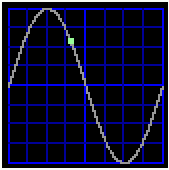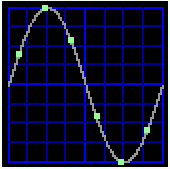What are effects
Effects in the dot2 are attributes that dynamically changes between two values. The dot2 comes with a set of build in effects that you can modify.
The effects run on the different preset types. You can't currently make effects on the Control, Shapers and Video preset types.
Effects are stored in the cues. When you need to stop an effects you need to "Stomp" the effect. Stomp is what we use to tell the console to stop the effect on what ever we choose to stomp. This can be fixtures or preset types.
Off is as usually used to remove values from our programmer.
Effects are running in a cyclic loop. It changes between the High and Low values.
Usually you select some fixture, then you select what preset type you want the effects to run on and then press the Effect key. Now you can choose some of the predefined effects.
You can have multiple effects running and if you need them to be in sync, then you can tap the Sync button.
If you want your effects to look more random, then you tap the Shuffle Selection button.
The following is a short description of the different values you can adjust.
Low / High value
The effects are mowing between two values. Called High and Low.
Speed
How fast your effect runs is defined by a speed parameter. This is measured in Beats Per Minute (BPM). The speed is also affected by the Master Speed special master - if it's active and turned on for the executor where you have stored the effect.
Phase
Phase is what could also be called distribution. This is where we can spread out the fixtures over the effect cycle.
If all your fixture have the same number in phase then they will all be at the same place in the cycle.
In this image there's 6 fixtures all at the green point in the sinus form:

If we spread them out evenly then they could look like this:

Each green point is a fixture. This is using one of the predefined phases called "0..360".
You can create nice looks and grouping by pressing the Align key and then keep turning the encoder in one direction. When you have values on the Phase with great separation you can create interesting looks.
The Align <> function can be used to create "mirrored" effects.
Width
In some effects it makes a lot of sense to adjust the width. It's usually an adjustment between how many fixtures are at the High value and how many are at the Low value.
Softness
In some effects you can adjust how the soft or hard the fixtures should change between the High and Low values. The higher the softness the more to fades.
If you would like to have a look at how to create and use effects, please read the How to Work with Effects.

